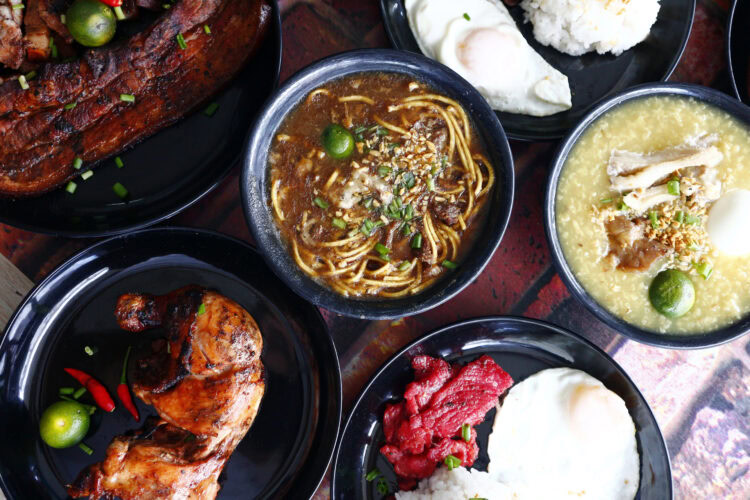The crispy skin of lechón kawali, a hint of palm vinegar, the subtle trail of pandan rice: from the first bite, the archipelago seems to spin in a kaleidoscope of flavors.
With every turn, a new shard of history flashes. Appearing in succession: Austronesian hearths, Chinese junks laden with soy sauce, Spanish galleons packed with achuete and ham, then the American canned milk from evacuation bags.
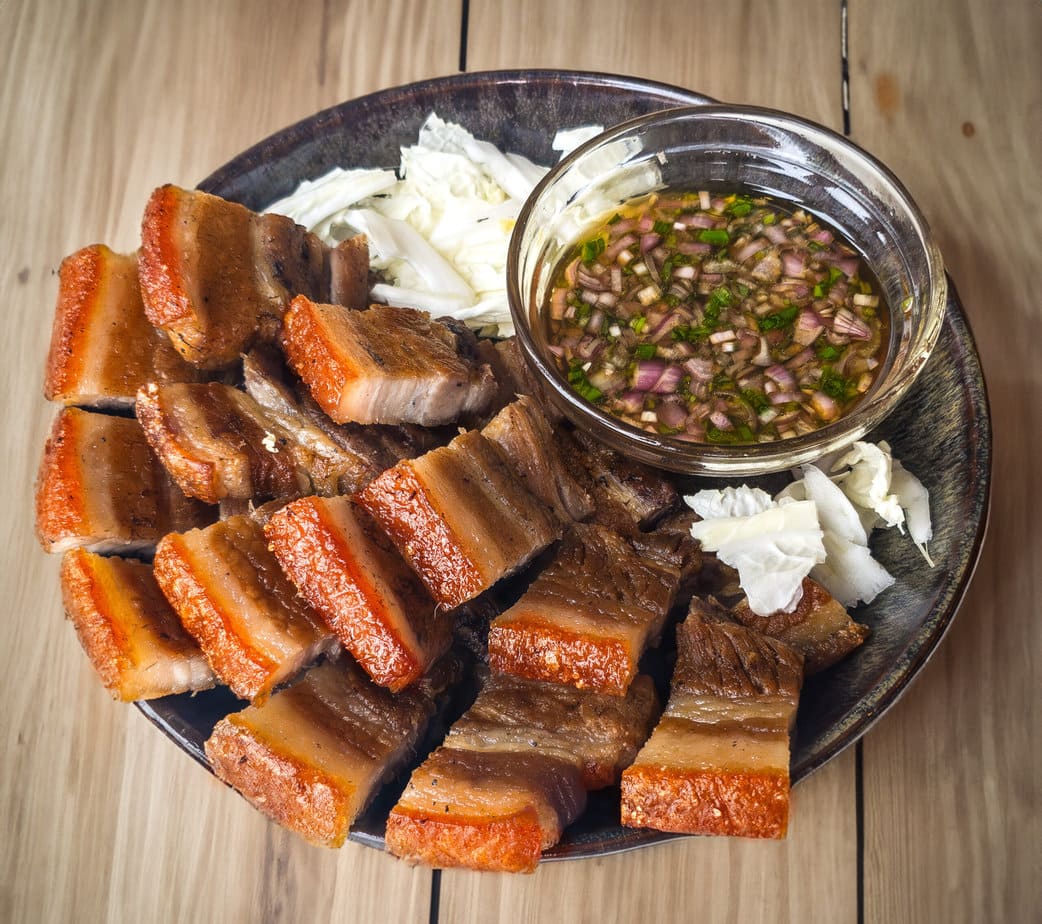
This article follows that whirlwind of influences while staying centered on the indigenous heart that holds it all together. From the pre-Hispanic kinilaw to the spice markets of Mindanao, the exploration continues up to today’s debates over authenticity. Four qualities emerge: ingenuity, balance, communal ritual and regional pride, allowing 7,641 islands to speak with one delicious voice.
Historical roots and indigenous foundations
Long before Magellan’s sails appeared on the horizon, Austronesian cooks were smoking fish over coconut husks, simmering reef catches in palm vinegar and wrapping rice in banana leaves for inter-island crossings.
Techniques such as inihaw (open-fire grilling), paksiw (vinegar braising) and kinilaw (fish or seafood cured in vinegar like ceviche) formed a conservation toolbox perfectly suited to the humid tropics. Rice anchored every meal, while fermented condiments (bagoong, patis and various local drinks) enriched the tables with salt and character.
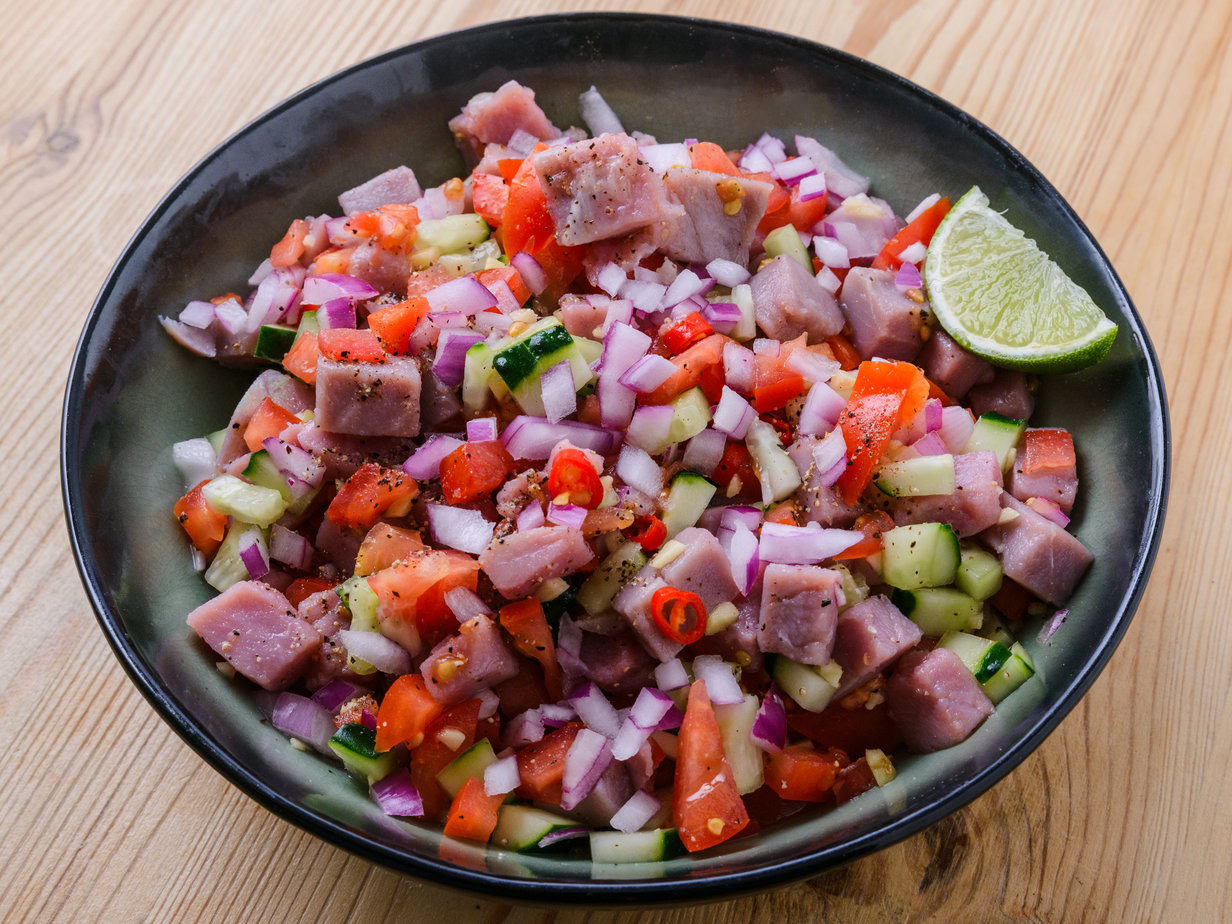
Foreign arrivals layered new possibilities onto this matrix. Hokkien traders poured soy sauce into the pantry; Spanish friars introduced fiesta dishes that turned everyday stews into spectacles; 20th-century GIs left cans of Spam that Filipinos alchemized into comfort.
Yet the core remained intact. In Pura Villanueva-Kalaw’s 1918 cookbook, Condimentos Indígenas, a batangueño chicken adobo shares ink with pre-colonial squid stews, proof that novelties are integrated, never substituted. Doreen Fernandez would later note that coloring with soy sauce is “just a modern shortcut”; vinegar, she insisted, remains the soul of adobo.
Across centuries of upheaval, vinegar, coconut and fermented fish have remained constant
Key ingredients and techniques
Acidity dominates the palate: whether it comes from cane vinegar, tamarind pods, or the star-shaped crunch of kamias.
Fermented depth arises from bagoong or the amber clarity of patis; richness flows from coconut milk that shimmers like silk in the simmering pot.
Most dishes begin with a base of ginisa (sautéed garlic, onion and tomato) before being slow-cooked over embers, grilled over high flame, or wrapped in taro leaves scented by steam. At the table, each diner mixes a personal sawsawan, tweaking salt, heat and acidity to taste, then often eats kamayan, hands molding rice into the perfect bite.
Regional diversity: Luzon, Visayas, Mindanao
In Manila, the soundtrack of honking horns seems muted beside the briny power of bagoong ilocano. Northern Luzon perfumes vegetables like ampalaya and squash with a pungent paste in pinakbet, bitterness softened by rice.
Two provinces farther south, the Kapampangans celebrate opulence: crackling pork jowl in sisig recipe, bringhe of sticky rice turned yellow with turmeric, and whipped hot chocolate thickened with ground peanuts (known in Pampanga as suklating batirul). On the Bicol Peninsula, coconut milk both soothes and highlights the burn of labuyo chilies.
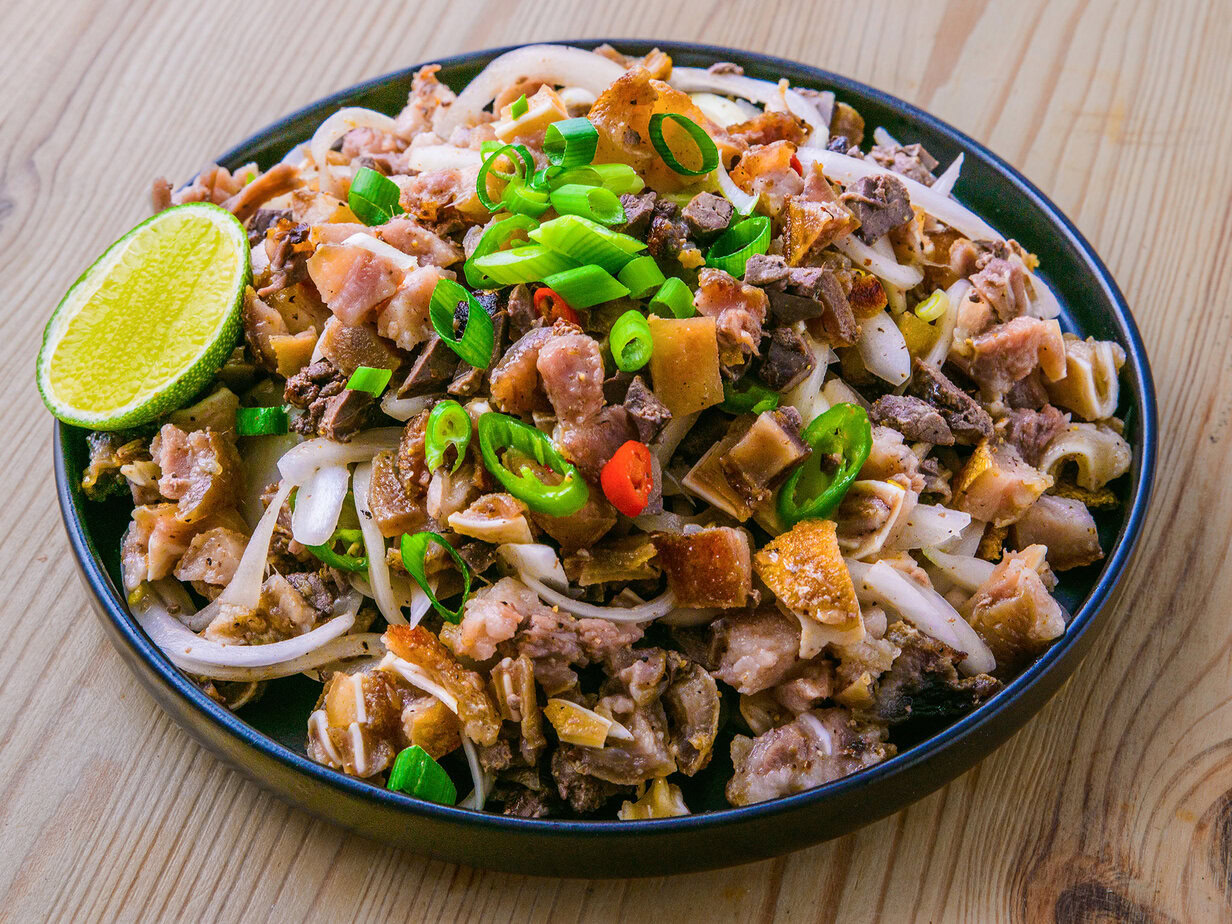
Visayan cooking is defined by sea foam and the scent of charcoal. Cebu’s lechón is so crispy locals claim it “needs no sauce.” Fishers in Mactan practice sutukil: one fish, three preparations—grilled, stewed and plunged raw in lime for kinilaw. Iloilo ladles steaming bowls of batchoy, pork offal crowned with crushed chicharrón for low-cost comfort.
Mindanao and the Sulu islands marry turmeric, burnt coconut and the fragrance of makrut leaves. A Maranao cook begins with palapa, a fiery scallion relish that wakes up any pot, while Tausug families blacken beef broth with charred coconut in tiyula itum. Halal traditions replace pork with beef, chicken or fish, but the communal feast, the pagana, still unfurls on floor-set platters lined with banana leaves.
Iconic dishes and flavor profiles
Northern Luzon leans salty-bitter, its stews scented with smoky etag; the central plains resonate with Spanish accents—tomato, liver, charcuterie richness; southern Luzon lets coconut cream calm chili heat.
Visayan kitchens favor smoke, citrusy acidity and a discreet sweetness that transforms pork belly into humba, braised in sweet soy sauce. Farther south, turmeric gilds rice while burnt coconut darkens broths. Here, diversity isn’t a detour—it is the very definition.
Authenticity and evolution
When a government committee proposed in 2021 a “standard” adobo recipe, the move sparked an online uproar. Memes proclaimed, “The best adobo is your lola’s,” while chefs like Carlo Lamagna reminded TEDx audiences that authenticity is a shifting constellation of memories, migrations and pantry realities.
Diaspora cooks tinker: purple ube pandesal in New York, adobo confit in Melbourne, sparking threads that oscillate between pride and purist tension.
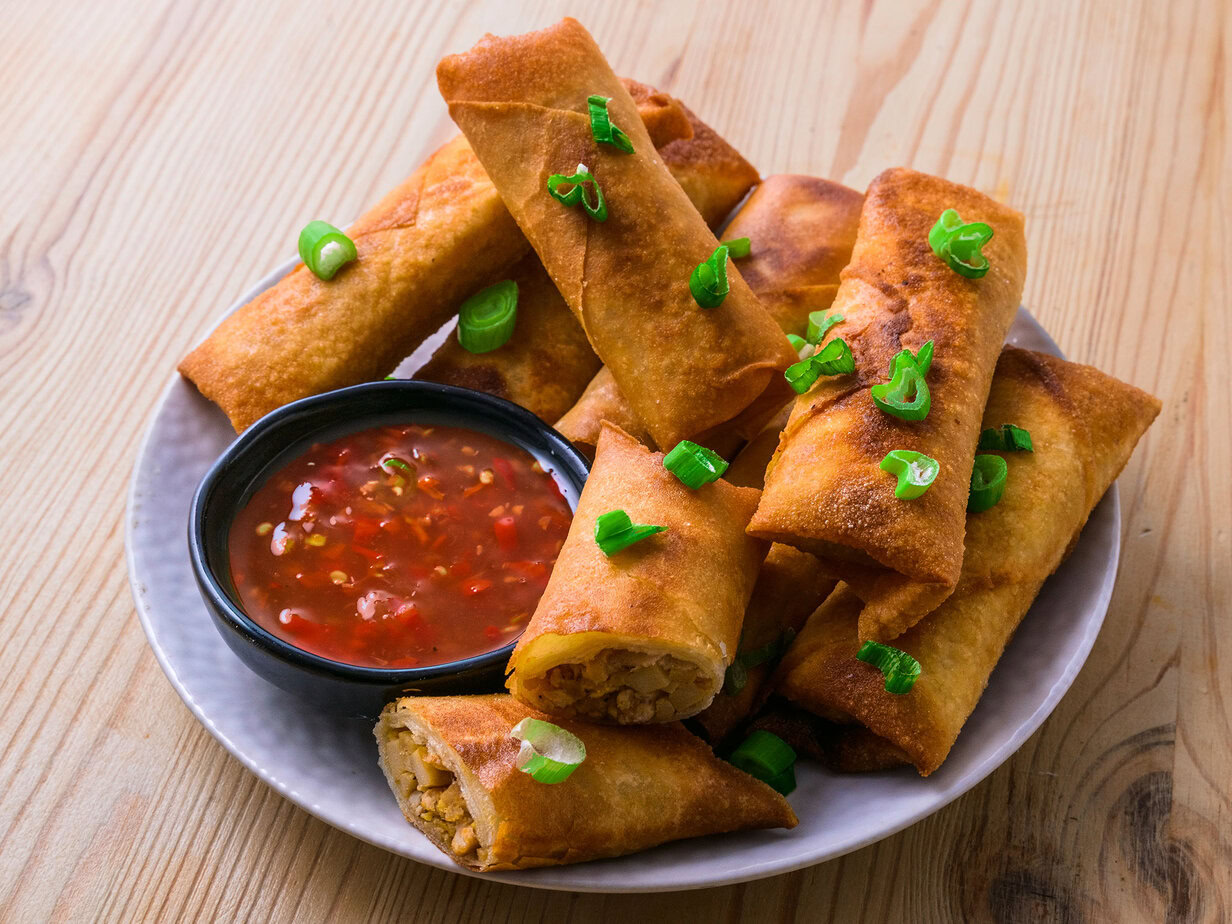
TikTokers answer lazy clichés of “brown, greasy food” by filming vibrant regional dishes: an Iranun curry, a sparkling palapa, an ultra-fresh kinilaw. Even seasoned chefs now experiment with bagoong in desserts, stretching the flavor map even further.
What truly defines Filipino cuisine
Strip away the labels and four traits remain. First, ingenuity: snout-to-tail thrift turns a pig’s head into a countertop star (sisig) and pig’s blood into a savory stew (dinuguan).
Second, balance: sour meets salty, rich teases crunchy, sweet flirts with bitter; the palate never stays tilted for long.
Third, the communal meal: dishes arrive salu-salo style, rice piled in the center, bowls of sawsawan all around so everyone can adjust bite by bite.
Finally, regional plurality: from uvud meatballs in Batanes to crispy lumpia from Manila and the peppery pyanggang of Tawi-Tawi, local dialects speak through the pots.
These pillars demolish a few lingering myths. Derivative? Not really: if pancit came from China, Ilocanos adapted it to their own salty-bitter taste.
Frozen in time? Ask the Bicolano who folds coconut milk into adobo or the Batangueña who perfumes it turmeric yellow: both remain true to heritage.
Unhealthy? Day-to-day family tables brim with water-spinach broths, green-papaya salads and ocean-fresh kinilaw. Even the fatty lechón of fiestas is tempered by a liver-vinegar sauce and mountains of pickled papaya, an in-built refreshing counterpoint.
At the heart of everything lies rice: steamed, puffed, pounded, fermented. It catches the juices of a sour fish stew, tempers the heat of a spicy laing and absorbs the final glimmer of a soy–calamansi sauce. Without rice, the Ilocanos joke, a meal is nothing but “eating practice.” And with it comes the right to tinker: no diner is blamed for drowning pork in vinegar or tossing a handful of chilies into the sinigang. This personal freedom, embodied in the sawsawan, is as Filipino as the basketball court across the barangay.
Recipes survive mostly through oral transmission: “basta, tansyá-tansyá” (just eyeball it). A cook knows the vinegar has “cooked off” when the steam loses its bite, not when a timer rings. Thus knowledge flows from one wrist to another, generation after generation, as fluid as coconut milk sliding from ladle to pot. The cuisine stays alive precisely because it refuses to be frozen.
